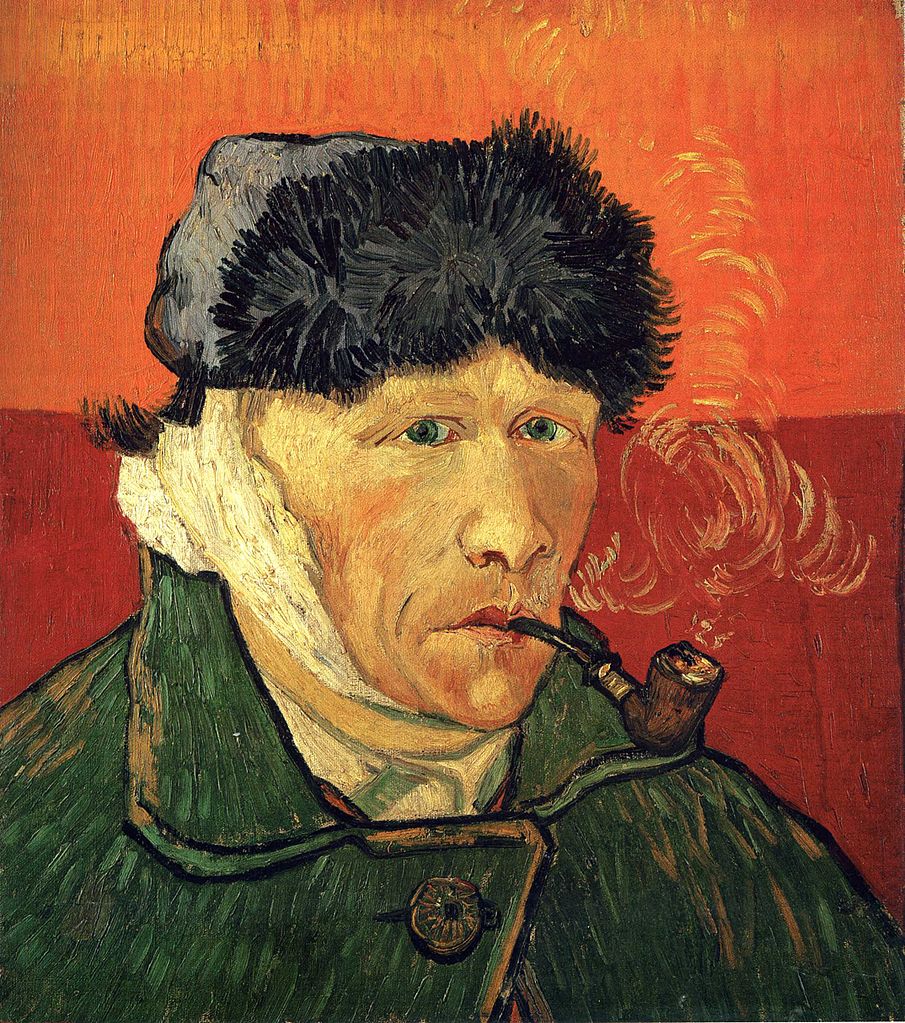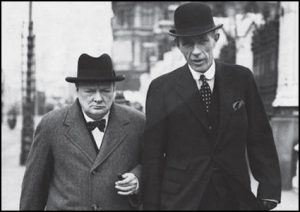Vincent Van Gogh was an admired artist, who was also a troubled and “tortured genius.” His artwork, Starry Night, Bedroom in Arles, and many others have earned him fame and recognition as one of the greatest artists of his time. But what many remember most about this artist is the story of his severed ear. Although his art is exemplary, his struggle with mental health and self-harm is admirable. His struggle was overlooked due to his incredible talent. He was successful as an art dealer, but as an artist, he had to prove himself with the headquarters of international art dealers, Gopil & Cie. During his lifetime, Van Gogh was the poster boy for the image of starving artist. His artwork was not recognized until much later in his career, which could have been a leading cause of his major depression and anxiety.1
Van Gogh, born in the Netherlands, decided to start his career in Paris in the 1880s, where many of the age’s great artists also resided. He believed he could get recognition for his pieces through his younger brother, Theo, who made his living as an art dealer. His brother introduced him to many artists, including Georges Seaurat, Camille Pisatto, and Paul Gauguin. Upon meeting these successful artists, Van Gogh was greatly inspired by their work and began creating his own artistic style, beginning in 1883. Later the same year, Van Gogh rented a small house in Arles, in the south of France. Paul Gauguin and Van Gogh became close friends and later roommates. They consistently bounced ideas off of each other and created a strong friendship.2

Like many friendships, theirs was rocky, and they found themselves drifting apart. Gauguin had moved on to a different artistic style and was exploring other ideas. Van Gogh at the time, had been reciprocating signs of depression and mental health issues, but at the time, these symptoms were considered normal. When Gauguin decided to explore other art spectrums, it involved moving out of the house he and Van Gogh shared. He broke the news to his roommate about his intentions, and this evidently this made Van Gogh go over the edge. He did not take the news lightly and both men began verbally arguing. Van Gogh had disappeared for a few hours and when he returned to confront Gauguin, he had a razor blade in hand threatening to hurt Gauguin.3
During the confrontation, however, Van Gogh was hesitant to hurt his friend and decided to turn the blade on himself and completely cut off his ear. Gauguin left him bleeding and alone. Van Gogh bandaged his head and began drowning himself in alcohol. During this episode, he walked out of his home and into the streets where he found a prostitute. The ear that he had severed off of himself had been neatly wrapped in a cloth; since Van Gogh was still heavily intoxicated, he decided to present this token to the prostitute. Patiently, she ran off and alerted the police about her encounter and they immediately rushed to his home.4
Shortly before Christmas Eve, Van Gogh was found by police in his bed, partially conscious and with major blood loss. Authorities rushed him to the hospital where he surprisingly recovered. Meanwhile, Gauguin was brought into questioning, but gave no testimony on the incident. It was believed that Van Gogh had suffered a severe mental breakdown long before he had severed his ear, but that this created a ripple effect that led to lunacy. The real reason behind the infamous Van Gogh ear-cutting may never be known; Gauguin had promised Van Gogh a pact of silence on the situation in letters that they supposedly exchanged. 5

After the incident, Van Gogh was admitted into a psychiatric facility in hopes of recovering mentally and physically. The dramatic change was not helpful for such a troubled artist, and in July of 1890, Vincent Van Gogh ended his life with a revolver. Before his suicide, however, he created a very iconic painting, Self Portrait with Bandaged Ear 1889. Van Gogh intended to persuade his doctors that he was perfectly able to continue working and creating art by creating this self portrait. He presented his piece, leaving a trail of wonder for his supporters as to why he included certain details in this particular piece, mainly because he continued to paint himself in the same yellow house he and Gauguin shared. Doctors overlooked these details and allowed Van Gogh to leave the facility.6
The epidemy of many artists like Van Gogh is often associated with mental instability, drug use, and alcohol abuse. Van Gogh had an array of medical issues that were tied back to his coping mechanisms (alcohol abuse), and as a result, many did not understand the struggles he faced and degraded him as a person while idolizing his artistic talent. As said before, the real reason behind his mutilated ear will be unclear, but his work and talent will continue to inspire and educate.
- Adam Gopnik, “Van Gogh’s Ear,” The New Yorker, Literature Resource Center (January 4, 2010): 48. ↵
- “Who Really Cut Off Van Gogh’s Ear?” Weekend All Things Considered, Literature Resource Center, (May 2010). ↵
- “Who Really Cut Off Van Gogh’s Ear?” Weekend All Things Considered, Literature Resource Center, (May 2010). ↵
- Belinda Thomson, “Comparing lives: issues of balance in biographical writing,” Literature Resource Center, French Politics, Culture and Society 24, no. 2 (2006): 60. ↵
- Tim Suermondt, “All the Answers.” Literature Resource Ceter, Prairie Schooner 85, no.3 (2011): 47. ↵
- Tim Suermondt, “All the Answers,” Literature Resource Center, Prairie Schooner 85, no. 3 (2011): 47. ↵



170 comments
Mia Stahl
In this article it is stated that mental illness was thought to be normal in the days that Van Gogh struggled with his depression anxiety. I would venture to say that mental illness is normal but has been indentified and categorized by the medical field and through this depression and anxiety has been seen stricly as a sickness that must be treated with anti depressants and other medications. Although these may be necessary in some cases its not often brought into question whether the rates of depression and anxiety are casued by a society that refuses to support its citizens.
Richard Morales
I learned so much about the world famous Van Gogh while reading this article. It’s sad to learn how disturbed he truly was. I do not understand how he could cut his own ear off just because he had an arguement with his good friend. It’s interesting how the great artists of the past also struggled with vices such as alcoholism just like the ones in todays world do.
Maisie Favila
Although I took an AP Art History course in high school, this article informed me on Van Gogh on a deeper level rather than strictly artistically. I wasn’t aware of his mental illness because the class I took only focussed on the beauty he created throughout it all. This goes to show that it’s very easy to look at something from afar and still not truly understand the bigger picture. I was really intrigued by this article because of the fact that it informed me on the backstory of his life and his inspiration for some of my favorite works of art.
Maggie Amador
Van Gogh’s missing ear has always been a quality that made him different from many other artists, as there have always been variations as to what drove Van Gogh to cut off his own ear. Upon looking at Van Gogh’s art pieces I don’t feel as though you can sense his struggle through his art. Although I am no expert in art, at first glance I would not assume that the artist behind “The Starry Night” or “The Yellow House” was struggling with possible depression. This article gives a great explanation of what led Van Gogh to his own demise.
Rebecca Campos
I never really knew all of the details surrounding the story of Van Gogh severing his own ear. This was a very informative piece that showed the misunderstood struggles that Van Gogh faced on a daily basis. It’s such a shame that he suffered so much and had such little support from those around him (i.e. Gauguin). His works were beautiful, but behind those pieces were pain. It’s unfortunate he never recovered and his life ended tragically. At least his magnificent pieces remain for us today to continue to remember him by.
Luis Magana
I only knew Van Gogh because of his artistic skills, but I never knew about his personal life and the pain he endured on himself before ending his life with a revolver. This article made me realize that even the most successful people on this earth suffer greatly for one reason or another. No ones life is ever just sunshine and rainbows it comes with great risks and many difficulties. I am very curious as to what was going through his mind when he decided to remove his ear. He had a mental illness that was considered common during his era and his artistic work wasn’t really appreciated until later on.
Karina Cardona Ruiz
I learned a lot about Van Gogh’s life that I did not know prior to reading this article. I had always heard about him cutting his own ear off and giving it to a lady, but I never knew what had led to that or why he would present his severed ear as a token of affection. I also did not know that he had been admitted into a mental institution. I liked how you gave us his backstory, the popular story, and insight on his struggles with mental illness and alcohol abuse. It’s sad to think that he didn’t have any help and that in the end he succumbed to his illness and consequently took his own life.
Hannah Wilson
I have heard of his paintings and work like most people have, but I did not know much about his life. I definitely did not know about his mental illnesses or that he committed suicide. Mental illness is a serious matter and if it is not confronted it could lead to a lot of harm. Van Gogh is no exception. Great article.
Maria Mancha
I never really knew about Van Goghs sickness. I remember reading something in school that said Van Gogh cut off his ear to give to the women he was in love with. And the reason he ate yellow paint was because she didnt accept his gift or him so he became depressed. So he ate the yellow paint because he thought it would make him happy, since yellow is a happy color. But to hear he may have lost it during a confrontation with a friend was even more interesting. Van Gogh has so many medical issues which made him like this. As depressing as it is his sickness created some of the most amazing pieces of art in history. I really enjoyed the article and the information behind it.
Max Lerma
I have seen Van Gogh’s art work before and knew that he was one of the most influential artists in history, but I was unaware of how troubled his life was. This article shed light on how even the most gifted among us can suffer greatly. Mental illness is a serious issue that plagues those affected by it and Van Gogh was clearly no exception. It’s a shame that his work was not fully appreciated until later in his life and by then it was too late for the struggling man. Thank you for writing this article and telling the story of Van Gogh.